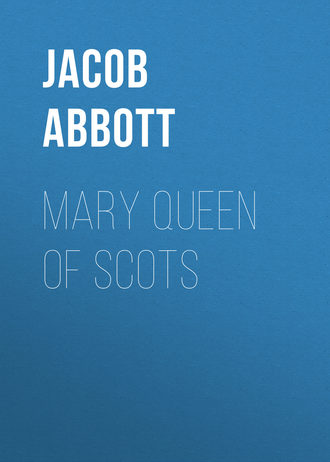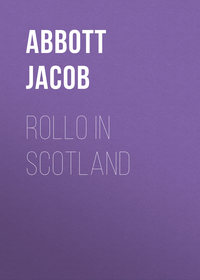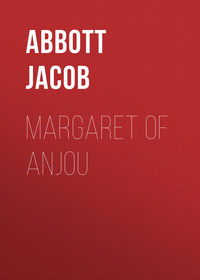 полная версия
полная версияMary Queen of Scots
The execution.
Heart-rending scene.
When her prayer was ended, she rose, and, with the assistance of her attendants, took off her veil, and such other parts of her dress as it was necessary to remove in order to leave the neck bare, and then she kneeled forward and laid her head upon the block. The agitation of the assembly became extreme. Some turned away from the scene faint and sick at heart; some looked more eagerly and intensely at the group upon the scaffold; some wept and sobbed aloud. The assistant executioner put Mary's two hands together and held them; the other raised his axe, and, after the horrid sound of two or three successive blows, the assistant held up the dissevered head, saying, "So perish all Queen Elizabeth's enemies."
Disposition of the body.
The assembly dispersed. The body was taken into an adjoining apartment, and prepared for interment. Mary's attendants wished to have it delivered to them, that they might comply with her dying request to convey it to France; but they were told that they could not be allowed to do so. The body was interred with great pomp and ceremony in the Cathedral at Peterborough, where it remained in peace for many years.
Elizabeth's affected surprise.
Her conduct.
Now that the deed was done, the great problem with Elizabeth was, of course, to avert the consequences of the terrible displeasure and thirst for revenge which she might naturally suppose it would awaken in Scotland and in France. She succeeded very well in accomplishing this. As soon as she heard of the execution of Mary, she expressed the utmost surprise, grief, and indignation. She said that she had, indeed, signed the death warrant, but it was not her intention at all to have it executed; and that, when she delivered it to the officer, she charged him not to let it go out of his possession. This the officer denied. Elizabeth insisted, and punished the officer by a long imprisonment, and perpetual disgrace, for his pretended offense. She sent a messenger to James, explaining the terrible accident, as she termed it, which had occurred, and deprecating his displeasure. James, though at first filled with indignation, and determined to avenge his mother's death, allowed himself to be appeased.
The end of Mary's ambition realized.
Accession of James I.
About twenty years after this, Elizabeth died, and the great object of Mary's ambition throughout her whole life was attained by the union of the Scotch and English crowns on the head of her son. As soon as Elizabeth ceased to breathe, James the Sixth of Scotland was proclaimed James the First of England. He was at that time nearly forty years of age. He was married, and had several young children. The circumstances of King James's journey to London, when he went to take possession of his new kingdom, are related in the History of Charles I., belonging to this series. Though James thus became monarch of both England and Scotland, it must not be supposed that the two kingdoms were combined. They remained separate for many years – two independent kingdoms governed by one king.
Tomb of Mary at Westminster Abbey.
When James succeeded to the English throne, his mother had been dead many years, and whatever feelings of affection may have bound his heart to her in early life, they were now well-nigh obliterated by the lapse of time, and by the new ties by which he was connected with his wife and his children. As soon as he was seated on his new throne, however, he ordered the Castle of Fotheringay, which had been the scene of his mother's trial and death, to be leveled with the ground, and he transferred her remains to Westminster Abbey, where they still repose.
Mary's love and ambition.
She triumphs in the end.
If the lifeless dust had retained its consciousness when it was thus transferred, with what intense emotions of pride and pleasure would the mother's heart have been filled, in being thus brought to her final home in that ancient sepulcher of the English kings, by her son, now, at last, safely established, where she had so long toiled and suffered to instate him, in his place in the line. Ambition was the great, paramount, ruling principle of Mary's life. Love was, with her, an occasional, though perfectly uncontrollable impulse, which came suddenly to interrupt her plans and divert her from her course, leaving her to get back to it again, after devious wanderings, with great difficulty and through many tears. The love, with the consequences which followed from it, destroyed her; while the ambition, recovering itself after every contest with its rival, and holding out perseveringly to the last, saved her son; so that, in the long contest in which her life was spent, though she suffered all the way, and at last sacrificed herself, she triumphed in the end.
The End1
See the view of Edinburgh, page 179.
2
Travelers who visit Scotland from this country at the present day, usually land first, at the close of the voyage across the Atlantic, at Liverpool, and there take a Glasgow steamer. Glasgow, which is the great commercial city of Scotland, is on the River Clyde. This river flows northward to the sea. The steamer, in ascending the river, makes its way with difficulty along the narrow channel, which, besides being narrow and tortuous, is obstructed by boats, ships, steamers, and every other variety of water-craft, such as are always going to and fro in the neighborhood of any great commercial emporium.
The tourists, who stand upon the deck gazing at this exciting scene of life and motion, have their attention strongly attracted, about half way up the river, by this Castle of Dumbarton, which crowns a rocky hill, rising abruptly from the water's edge, on the north side of the stream. It attracts sometimes the more attention from American travelers, on account of its being the first ancient castle they see. This it likely to be the case if they proceed to Scotland immediately on landing at Liverpool.
3
Tourner.
4
Dulce meum terra tegit.
5
For the situation of this palace in respect to Edinburgh see the view of Edinburgh, page 179.
6
The ruins of the royal chapel are to be seen in the rear of the palace in the view on page 114.
7
See view of Holyrood House, page 114 and compare it with this plan.
8
Compare this plan with the view of the castle, page 236.




![Rollo's Philosophy. [Air]](/covers_200/36364270.jpg)






